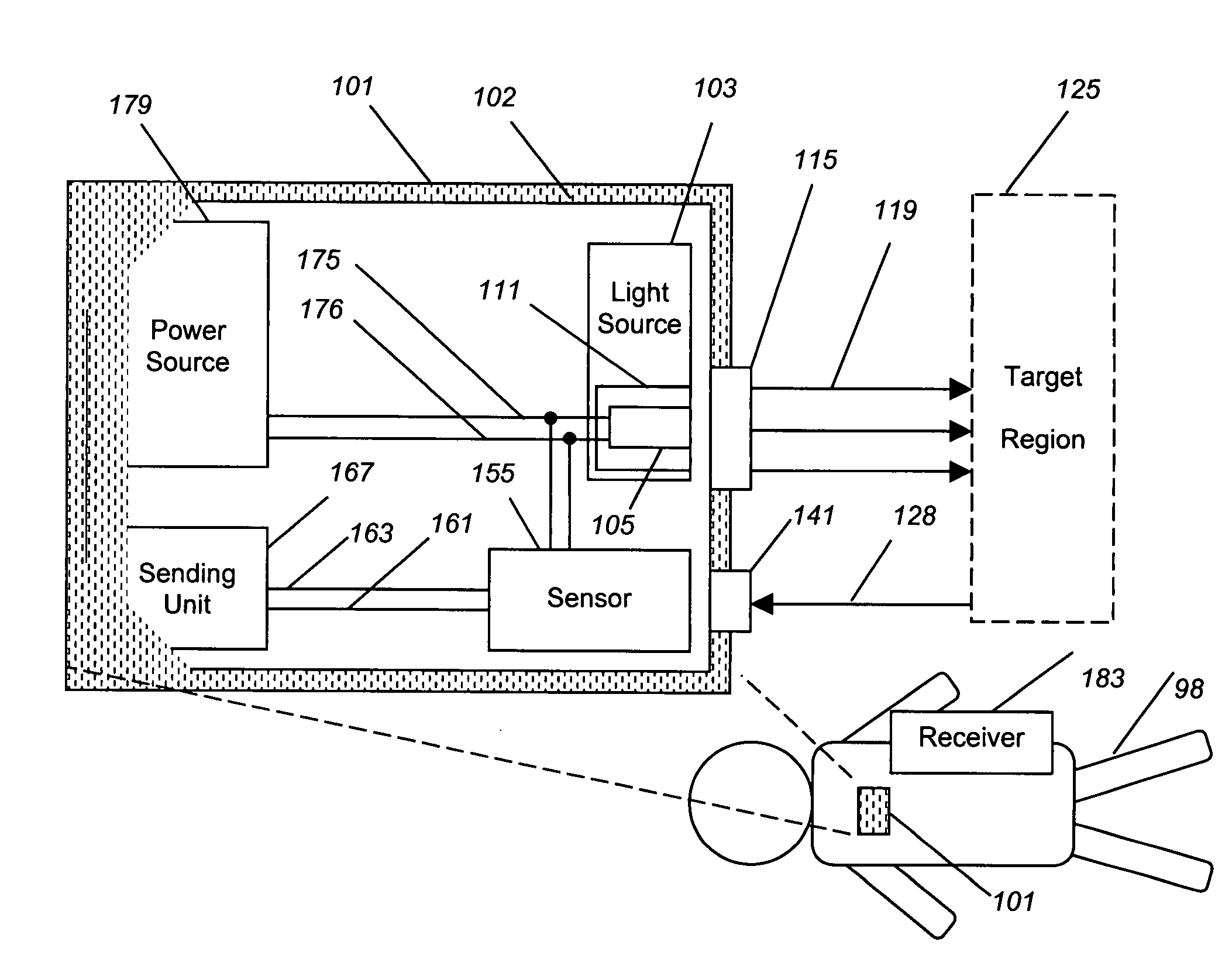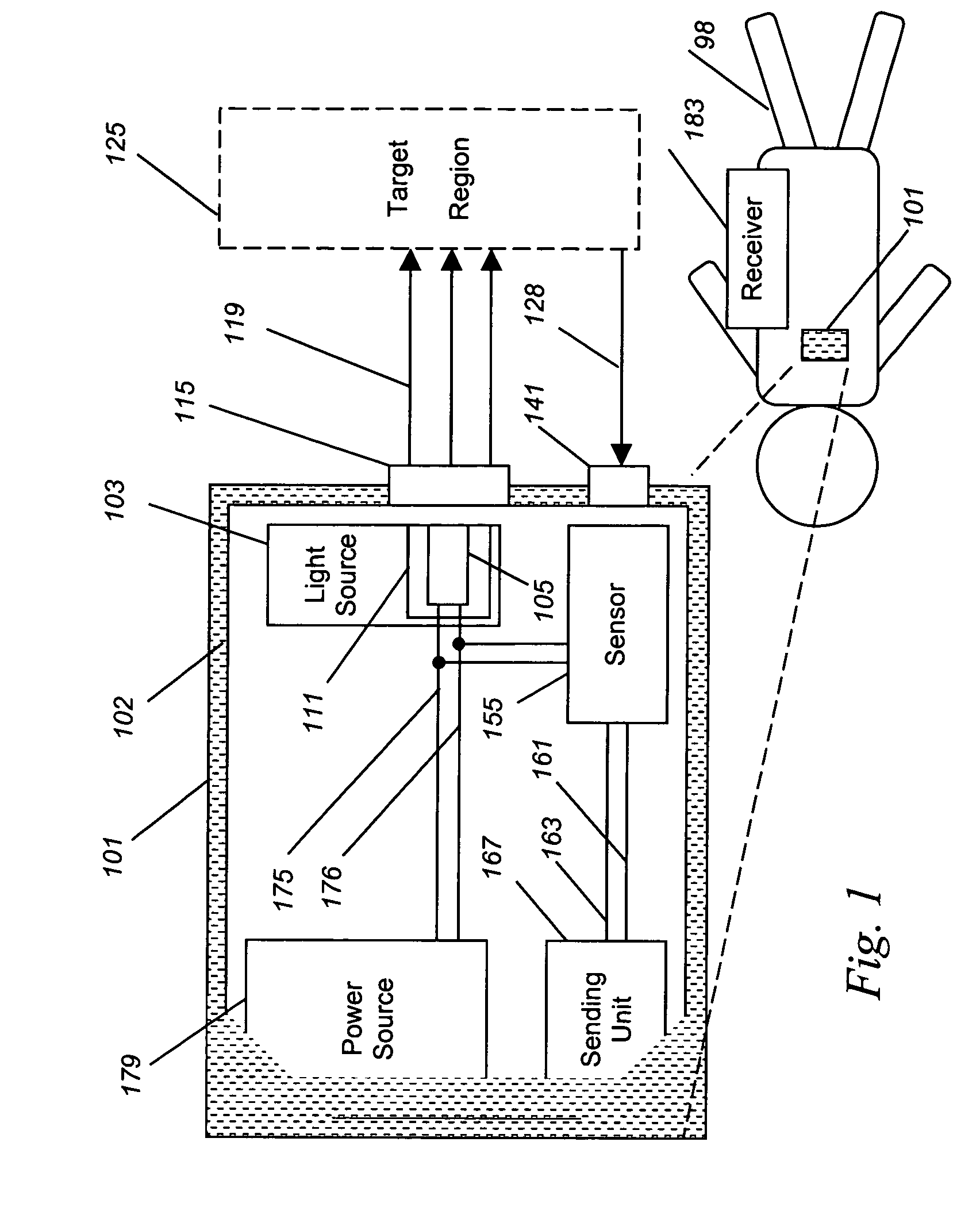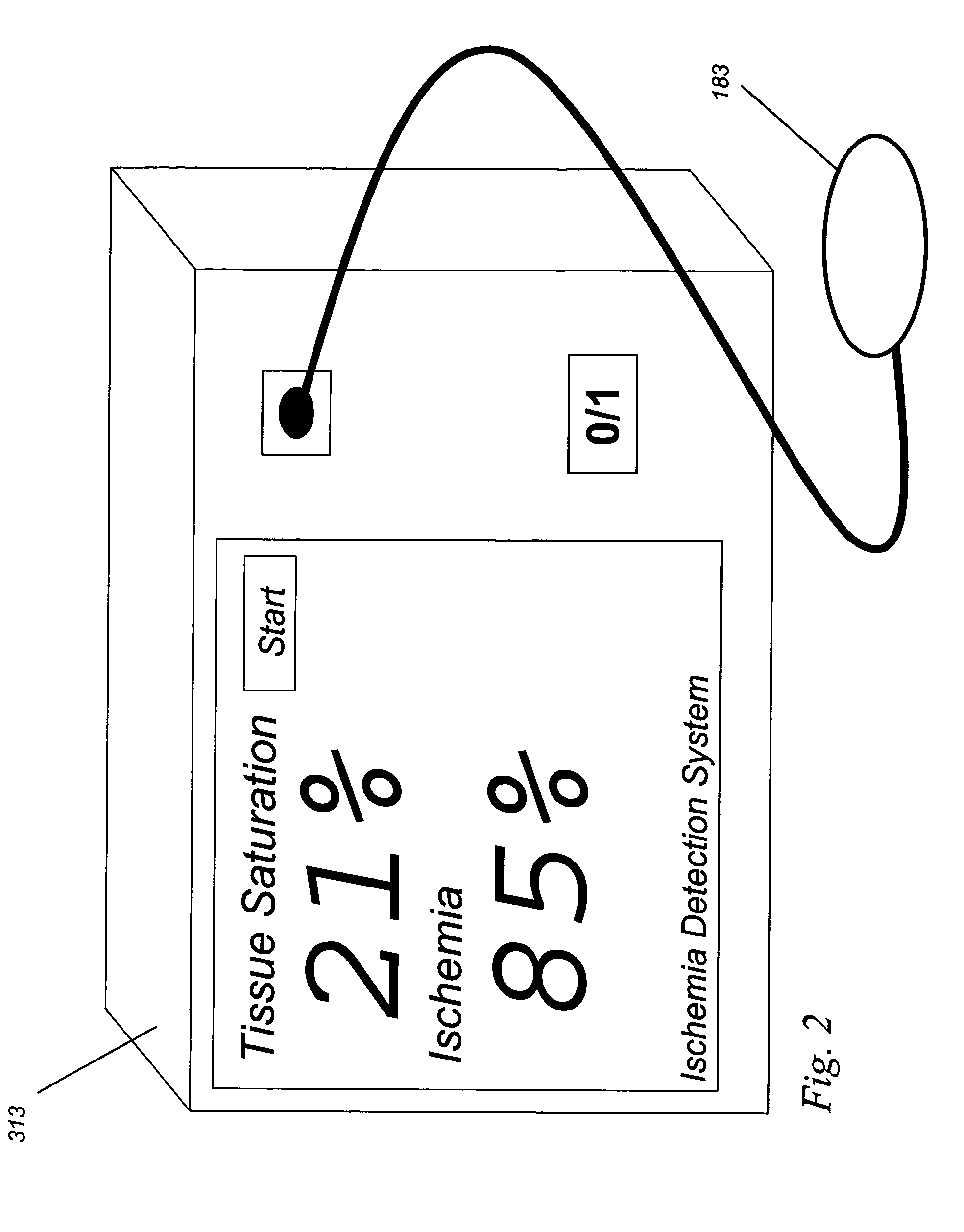Implantable tissue ischemia sensor
a sensor and tissue technology, applied in the field of implantable tissue ischemia sensors, can solve the problems of insufficient oxygen delivery to meet the metabolic needs of the tissue, unreliable clinical detection of ischemia, and ischemia is especially difficult to detect, and noninvasive imaging of ischemia lacks the immediacy that allows for early intervention or real-time feedback
- Summary
- Abstract
- Description
- Claims
- Application Information
AI Technical Summary
Benefits of technology
Problems solved by technology
Method used
Image
Examples
example
[0058]The breadth of uses of the present invention is best understood by example. This example is by no means intended to be inclusive of all uses and applications of the apparatus, merely to serve as a case study by which a person, skilled in the art, can better appreciate the methods of utilizing, and the scope of, such a device.
[0059]In this example, an optical sensor, similar in basis of operation to device 101, is implanted into abdomen of a patient undergoing colon surgery. In this case, the animal receives heart-lung bypass, such that the blood flow and oxygen content of the blood is exactly controlled by a bypass specialist rather than by the animal's own heart and lungs, affording the ability to create and resolve ischemia at will. An aortic Doppler probe is placed, which measures the delivery of blood to tissue. In this case, when the rate of the pump is lowered to zero flow, ischemia must exist in the tissues being monitored.
[0060]Analysis of the tissue ischemia is perfor...
PUM
 Login to View More
Login to View More Abstract
Description
Claims
Application Information
 Login to View More
Login to View More - R&D
- Intellectual Property
- Life Sciences
- Materials
- Tech Scout
- Unparalleled Data Quality
- Higher Quality Content
- 60% Fewer Hallucinations
Browse by: Latest US Patents, China's latest patents, Technical Efficacy Thesaurus, Application Domain, Technology Topic, Popular Technical Reports.
© 2025 PatSnap. All rights reserved.Legal|Privacy policy|Modern Slavery Act Transparency Statement|Sitemap|About US| Contact US: help@patsnap.com



